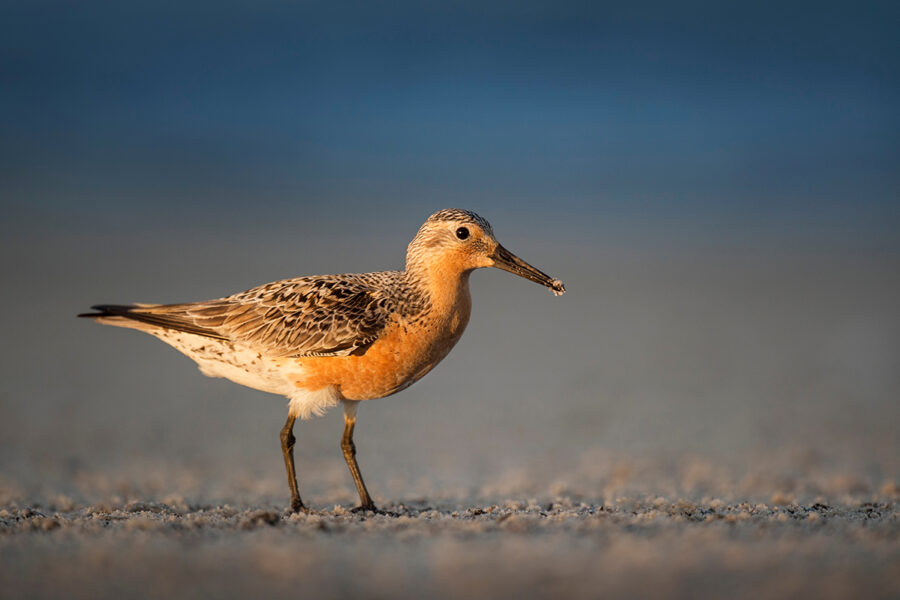
A Red Knot stands on a sandy beach in the early morning sun with some blue water in the background.
The red knot is an endangered species of migratory shorebird which spends a part of its migration, a very vital part, every year at the New Jersey shore. Its annual journey, from south to north, entails an utterly remarkable feat of flight of up to 9,000 miles, from the most southerly part of Tierra del Fuego in South America to its breeding grounds in the Arctic. On the way, its final destination before the Arctic is its stop in and around the Delaware Bay.
While here, it feeds on the eggs of thousands of horseshoe crabs during their equally remarkable annual spawning event, which occurs on the Delaware Bay shore beaches every May and June.
Clearly the timing is significant, as the red knots have lost as much as half of their body weight with which they began by the time they find themselves here.
And perhaps the most amazingly impossible-to-fathom aspect of this long distance traveler? They repeat their journey, north to south, every autumn!
One tagged bird, at 19 years of age, was estimated by researchers to have flown farther than the distance from the earth to the moon during its lifetime. It was nicknamed, appropriately, “Moonbird.”
Sources: The Nature Conservancy, nature.org; American Bird Conservancy, abcbirds.org/bird/Red-Knot/

